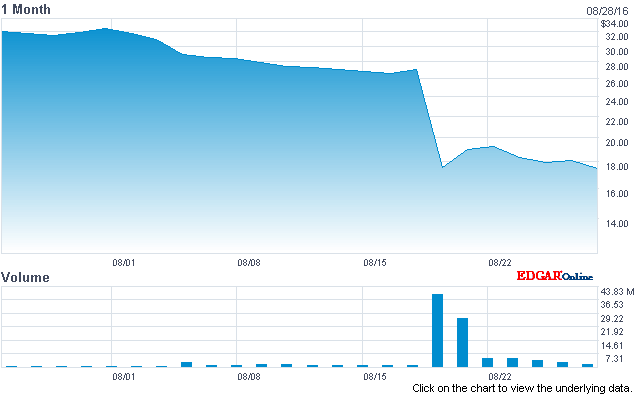DOJ Memo Does Little To Thwart Private Prison Expansion But Market Uncertainty Hints At Future (8/28/2016)
Higher detention rates mean more money for the corporations. Money that comes from the tax payers, at two billion dollars per year. In 2014, that figure made up 40 per cent of ICE's annual budget of 5.3 billion. There is a monetary incentive to detain rather than release, despite many immigrants being eligible for immediate release. The facilities are supposed to hold and process individuals for possible deportation, not detain them for months at a time, often in inhumane conditions. These facilities are notoriously known for overcrowding, rampant abuse and lack of oversight by the federal and state authorities. These facilities are dangerous. So dangerous, that one of the largest private prison contractors known as Corrections Corporation of American (CCA) was caught partnering up with violent gangs in order to cut costs and help with security.
Gabriela Ortiz --- Last Thursday, the DOJ released a memo aiming to significantly reduce and eventually end its use of private prisons. The decision was hailed as a victory as private prisons continue to come under scrutiny for questionable conditions. But before we celebrate the end of the private prison industry, it should be noted that the DOJ memo only affects 13 of the facilities operated by private prisons. Majority of the private prisons are overseen by the Department of Homeland Security (DHS). The DHS, alongside ICE (Immigration and Customs Enforcement) use private prisons to hold immigrants. Those facilities will go unaffected by the DOJ announcement.
According to a report by the Center for American Progress, as of December 2015, the DOJ had almost 200,000 individuals in its prison. The DHS' number was double that, at 400,000 individuals. So what drives such high numbers? Bed quotas. As mandated by congress, bed quotas require ICE to hold "not less than 34,000 detention beds" , a figure that includes women and children. These women and children are often fleeing from fear of death or torture. They are asylum seekers, a majority of whom have no prior criminal record. Yet, they are punitively held in one of the 250 facilities run by for-profit corporations.
Higher detention rates mean more money for the corporations. Money that comes from the tax payers, at two billion dollars per year. In 2014, that figure made up 40 per cent of ICE's annual budget of 5.3 billion. There is a monetary incentive to imprison rather than send to a safe home, despite many immigrants being eligible for immediate release. The facilities are supposed to hold and process individuals for possible deportation, not detain them for months at a time, often in inhumane conditions. These facilities are notoriously known for overcrowding, rampant abuse and lack of oversight by the federal and state authorities. These facilities are dangerous. So dangerous, that one of the largest private prison contractors known as Corrections Corporation of American (CCA) was caught partnering up with violent gangs in order to cut costs and help with security.
So while the move by the DOJ is welcomed and much needed, the next crucial step toward reform is to repeal the "bed quota", and to end all existing contracts with private prisons. Decreasing the bed quota from 34,000 to 30,000 will not suffice. It must end. No other law enforcement requires such quotas. An arbitrary number that serves no purpose other than to line the pockets of the prison purveyors. But until Congress ends the bed quota corporations like CCA and GEO will continue to expand at the expense of immigrants and asylum seekers.

